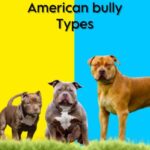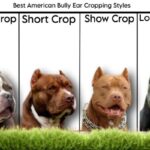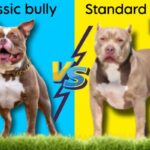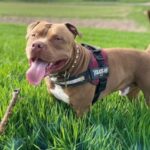The American bully is a renowned dog breed which takes away the hearts of most people through its impressive physique and mind-blowing temperament.
But its popularity does not stop over here, it’s extended to a wide range of color variations. So, in this article we will dive deeper into the topic of American Bullies’ coat color availability.

If you are thinking of bringing an American bully pet to your home, then you should be well aware of the different coat colors found in this breed. This article will act as a full guide for those people and help them in selecting their favorite & healthy color combination.
Moreover, it will also explain to you the basic concept behind their different color pigmentation.
Table of Contents
- 1 Coats colors of different bully breeds
- 2 Pigments responsible for different coat colors
- 3 Genes affecting the coat colors of the American bully
- 4 Ancestral influence on the coat color of American bullies
- 5 Major groups of American bullies’ cost color
- 6 List of some popular combinations in American bully
- 7 Effect of dilution on the American bully coat colors
- 8 Nose colors of American bullies
- 9 Final ending
- 10 FAQs
Coats colors of different bully breeds
Different bully breeds are recognized by their specific color combinations. For instance, an Australian shepherd can be easily identified by its blue Merle coat and the Dalmatian is recognized for its black markings on a white background.
But in the American bully breed, you will get to observe numerous colors or coat patterns that it would be difficult to count them all together.
Pigments responsible for different coat colors
The two major pigments which are responsible for the different color pigmentation of the American bully breed are Eumelanin and Pheomelanin. Both are basically forms of the melanin pigments.
Eumelanin gives a black color by default, while Pheomelanin is red with a default color of yellow. But, the variation in colors occurs because genes modify these basic colors into other colors.
Eumelanin, by getting mixed with different genes, modifies the black color into other distinct colors like liver, grey, brown etc. Similarly, Pheomelanin creates different types of red, ranging from deep red to orange, cream, gold and tan.
It is important to note that Pheomelanin only influences the coat or hair colors of American bullies, but Eumelanin is also responsible for the colors of their nose & eyes.
Genes affecting the coat colors of the American bully
Recessive and dominant are two gene types which significantly influence the coat colors of American bully dogs.
In fact, the arrangement of genes in a specific sequence or order is necessary in all human beings for the proper functioning of their bodies.
Dominant genes are those who overrule or dominate over other genes (recessive). The breeding of two recessive genes of the American bully breed results in a puppy with a desired coat color.
For example, the liver color is recessive, so both the parent American bully dogs must carry liver genes to get liver color litters (puppies). On the other hand, you need a single dominant gene and other recessive genes in order to produce a dominant phenotype.
Otherwise, breeding of two dominant genes can raise 50 % chances of producing a puppy suffering from any disorders.
Now, we have got how the coat color of American bullies is influenced by their parents’ genes. Let’s look at the different colors of furs available in this American bully breed:
Ancestral influence on the coat color of American bullies
American Staffordshire terriers and American pitbull terriers are considered as ancestors of the American bully breed, who exhibit their different coat colors.
American Staffordshire Terriers can be of red, white, fawn, blue, black, brindle and merle with various color patches over them.
Similarly, pitbull terriers are also available in distinct colors like blue, black, brindle, fawn, red and white, along with several sorts of markings on different areas of their body.
Thus, American bullies are found in a wide range of colors and color patterns due to their ancestral influence over them.
Major groups of American bullies’ cost color
Different color combinations and patterns in the American bully make it one of the unique dog breeds. There are three major color groups in which these canines are grouped into :
- Solid color
- Mixed color
- Rare color
1. Solid color
A solid colored American bully holds only a single colored coat throughout its whole body. Standard solid colors include black, blue, brindle, red, fawn, white etc.
Black coat
Presence of excess amount of Eumelanin pigment is responsible for the black coat color of these dogs. They hold black dominant genes, so merely single black parent is enough to produce a black offspring.
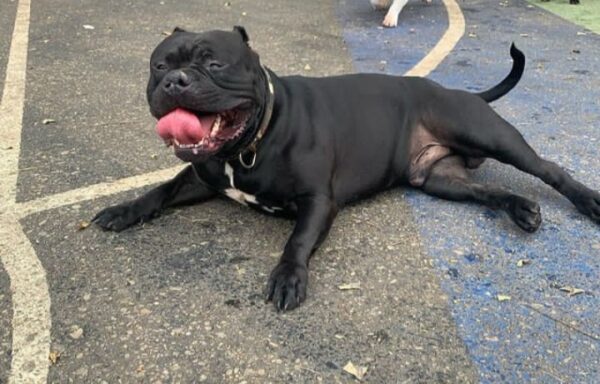
American bullies with solid black coats, black noses, and black brindles are three main sorts of black American Bullies.
Proportions of color on the body
(I). At Least 80% of the coat color should be in solid color except white.
(ii). 20% or less than that may be covered with white markings.
Blue coat
An American bully with a blue coat is another popular color, ranging from light blue to a dark bluish grey color. The noses of these canines are also blue.

This blue color on these canines becomes visible when the black color gets mixed with dilution genes.
Fawn color coats
Fawn American bully is one of the pleasant and warm color options. They are available in different shades, from light cream to the deepest golden or brown.
Moreover, this fawn color is commonly known as the caramel color with its distinct tones.
Their striking appearance along with their loving behavior makes them a popular choice for families.
Some other fawn American bully coats include :
Blue fawn
Their coat is a mix of blue and fawn color in a 50/50 proportion. This means their half of the body is covered with blue and the other half is fawn in color.
Red fawn
Similarly, the Red fawn American bully is covered with red and fawn hairs in equal degrees.
Sable fawn
Sable fawn canines are a beautiful combination of black and fawn color coats. The ratio of these colors varies as per individual dogs.
Reverse fawn brindle
The dogs are known as reverse fawn brindle when they hold brindle markings over their fawn background.
Brindle color coat
The combination of light brown or red and black genes results in the brindle color of the coat. This type of coat is also available in a wide range of colors, like red brindle, black brindle, fawn brindle and liver brindle.

The color of the noses of these dogs can be brown, black or liver in color.
2. Mixed colors
The most common type of coat in the American bully is a mixed-colored coat. Canines holding two or more colors of coat are called mixed colors.
The most common combinations are black and white, brindle and white, blue and white, red and white & fawn and white. Solid colors are mainly blue, black, liver and red.
Some other combo of solid colors with other coat colors are :
- Black and Blue
- Fawn and Blue
- Black and Red
- Liver and Brindle
- Black and Brindle
3. Rare colors
There are also some rare colors which are found in the American bully breed, which are :
Merle coat
Merle bullies are the crossbreed of American pitbull terriers and American Staffordshire. Their unique appearance makes them look different from other coat colors.

They are chiefly characterized by the number of diluted patches over their different colors of coats.
White coat
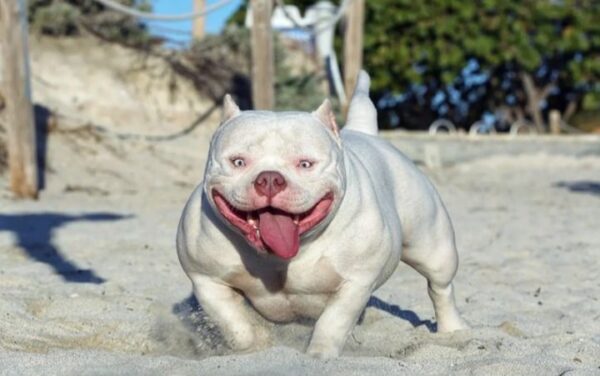
A white color is also a rarer coat pattern. Their eyes are usually blue but can be of any other color also.
There are different types of white bullies, which are :
(I) Albino
Dogs which are wholly white and don’t have patches of any color over them are called albinos. Most of the white bully breed dogs have blue eyes.
(ii) Piebald
The Piebald coat has patches over a white background. The most common colors found in Piebald dogs are black and white, blue and white, brindle and white, fawn and white & red and white.
Piebals are different from Merle bullies as they don’t have patches of different shades or tones.
(iii) Irish marked
In the case of an Irish marked coat, dogs don’t hold patches on their body. They have white chests and legs, but the entire body can be of any color.
Tricolor coat
Tricolor American bullies are not commonly available but are quite rare. They exhibit three separate colours, which include white, tan and one base color.

The base color of these canines can be either lilac, blue, black or chocolate. Some different Tricolor combinations are black tricolor, blue tricolor, chocolate tricolor and lilac tricolor bullies.
List of some popular combinations in American bully
- Black and white
- Black and red
- Liver and brindle
- Red and white
- Fawn and white
- Black and blue
- Blue and white
- Black and brindle
- Blue and fawn
- Brindle and white
You will have some other coat colors of American bullies which may vary from lighter tones to darker shades.
Effect of dilution on the American bully coat colors
Several factors influencing the coat color and color patterns of American bully dogs are their ancestral color, genes and base color of parent dogs.
Other than the above factors, dilution genes also play a great role in the coat color of dogs. If puppies inherit dilution genes from their parents, then they get a lighter shade of coat color than their parents.
For instance, American bullies or Pitbull terriers with dark coats may get blue, grey or liver colored puppies due to the dilution genes being acquired from their parents.
A black coat canine may produce a blue coat dog if it inherits two copies of the dilution gene.
Nose colors of American bullies
As we all have a wide range of coat colors of American bullies to choose from. Likewise, the color of the nose of these furry pets also varies, and the nose color entirely depends upon their coat color.
The different colors of noses of American bullies are :
Black nose
Black is the most common nose color for American bullies.
Blue nose
A nose which is blue or silver in colour. It may vary from light blue to pale blue.
Pink nose
Its nose is very light brown or tan in colour.
Red nose
American bullies with red noses are rare to be seen. They hold black or brown noses with some reddish shade on them.
Tan nose
Tan points are areas which are lighter than the rest of the bodies of dogs. It is usually visible on their ears, legs and face. Hence, tan noses are noses of the same color as the tan points on their body parts.
Liver nose
It refers to noses which appear brown or chocolate brown in colour.
Final ending
As you all have become aware of the different colors of coat and coat patterns available in the American bully breed. There are many factors such as ancestral colors, dilution genes and base color of parent canines, which remarkably affect the coat color of dogs. But the temperament of American bullies does not get affected by their coat color, so you can choose any color of your choice.
However, American bullies are well known for their friendly and loving temperament. They become excellent companions of their owners as well.
Hope this article would have clarified all the concepts and doubts behind the inheritance of different colors of coats.
FAQs
Q1. What are the colors of the American Bully?
Ans. There are three major color groups in which American bullies are grouped into :
- Solid color
- Mixed color
- Rare color
Q2. What is the rarest American bully color?
Ans. Some of the rare colors of American bullies are :
- Lilac American bully
- Champagne American bully
- Merle American bully
Q3. What are the different colors of micro-bullies?
Ans. The micro bully is found in various colors, like black, blue, brown, fawn, red, white, and grey.
Hey there! I am Raj Saraf, a 23-year-old guy from India behind this awesome blog. Currently, I am pursuing my Master’s degree in English literature. Being a great admirer of this fascinating American bully dog breed, I did extensive and comprehensive research to my optimal level. During this, I got to know about some new and interesting facts about them, which encouraged me to go ahead. Moreover, I am fond of sharing my experiences and knowledge with you all! I hope you enjoy reading my blogs, and feel free to share any experiences or opinions about this amazing breed in the comments section below.


